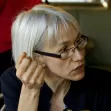The Daily Source of Urban Planning News
Foreclosures Become Kidnapping Centers
In Phoenix, human traffickers are using foreclosed homes to hold illegal immigrants hostage.
CNU Comes To Denver
In preparation for CNU 17 in Denver, the hometown paper published three op-eds on the importance of new urbanism, how it is changing development throughout the country, Denver's stellar role in it, and examples of it being put to use in the region.
How Long is the Waiting List for Rental Assistance?
For low-income people in the Mankato, Minnesota area, there might be no hope for assistance from government vouchers.
Small Park Brings Big Wave to New York City
A segment of New York City's High Line elevated park is set to open this week. <em>New York</em> Magazine looks at the real estate and architecture booms that's accompanying it.
Nation's Largest Mass Transit Project is under Way
The second passenger rail tunnel beneath the Hudson River will link New Jersey with New York and will also double the capacity on the nation's busiest rail corridor.
Walking Tour Focusing on Smart Growth
A walking tour of tamford downtown development projects started at the Government Center.
Cheap On-Street Parking: Right or Wrong?
Planners in Park Slope have been experimenting with adjusting the price of on-street parking during peak hours on busy Fifth Avenue.
California's Classrooms Going Green
With what some are calling the worst classroom conditions in the nation, California is trying to solve the problem by replacing all of its portable classrooms with green buildings.
Incentivizing Pedestrian Areas Near Houston's Light Rail
City officials in Houston are set to consider plans to incentivize broad pedestrian walkways near existing and planned light rail stations within the city.
New Eco-City Planned in China
A new 350,000-person eco-city is being planned in China, this time with cooperation from Singapore. Planners are hopeful that it can serve as a sustainable model for development in countries with high population growth.
A Solar Car By 2010?
Italian car designer Pininfarina has announced that it will release a fully-electric, partially solar-powered car in Europe in 2010.
Dog Walkers, Unite!
Boulder's open space planners are calling for the intervention of different interest groups, including dog lovers, equestrians and hikers, to set rules for the city's most popular trails.
Not Enough Chairs in Times Square
Less than a week after Times Square became an outdoor lounge, it is already hard to find a seat there.
Mobile Homes: Common Source of Legal Disputes
Though they are still striving for social tolerance, mobile homes have managed to achieve a certain legal acceptance.
BLOG POST
Thinking by the Square Foot
<p> <em>"Buyers value the dollar per square foot, and the builder responds by delivering as many square feet of conditioned space as possible for $X. If he can deliver 100 more square feet than the competition, most buyers think it's a better value."</em> </p> <p> <em>-Ron Jones, Green Builder Magazine, in <a href="http://www.washingtonpost.com/wp-dyn/content/article/2007/04/06/AR2007040600934.html" target="_blank">The Washington Post</a>.</em> </p>
Handling Growth in the Bay Area
A roundtable discussion on the projected growth in the Bay Area of California, and the planning tools being unveiled that will help mitigate the projected increase of an additional 2 million inhabitants to the region by 2035.
Suburban Home Comes to Venice
American artist Mike Bouchet constructed a full-sized replica of a standard American suburban home to float outside the Venice Biennale art exhibition. Instead, the house sank, suggesting new meanings for the artwork.
Big Possibilities, Big Dangers
A new growth management law in Florida is both good news and bad news, says Jane Healy of the Orlando Sentinel.
BLOG POST
Will Developing Nations Drive/Follow in our Faulted Footsteps?
<p> The growth in hybrid car sales is a welcome sign that a major change in the automobile industry is afoot. The shift to transport infrastructure that is not based on the archaic complexity of an internal combustion engine, with its hundreds of moving parts and compressed fuel explosions, has been long put off by an automobile industry, happy with status quo, partnered with oil cartels with the power to price their product as if it were in endless supply. But with smack-in-the-face-reality fuel prices last summer, the collapse of the so-called “Big Three” over the winter, and the simultaneous heralding assertion of alternative energy technologies (Daimler AG <a href="http://money.cnn.com/2009/05/19/news/companies/tesla_daimler_electric/index.htm?postversion=2009051915">bought a 10% stake in Tesla Motors</a> last month!), the fallout of western economic near-collapse has changed everything we’ve known to be sacrosanct; Leonard Lopate even waxed nostalgic about the “<a href="http://www.wnyc.org/shows/soundcheck/episodes/2009/06/08">Death of the Car Song</a>” yesterday on National Public Radio’s local station, WNYC.
Sprawl Halted in New Jersey
The Morris County Planning Board indicates that no new residential subdivisions of 20 or more lots were received in 2008, which signals the end of large-tract developments.
Pagination
Yukon Government
Caltrans
New Jersey Institute of Technology
Mpact (founded as Rail~Volution)
City of Camden Redevelopment Agency
City of Norman, Oklahoma
City of Portland
City of Laramie
Urban Design for Planners 1: Software Tools
This six-course series explores essential urban design concepts using open source software and equips planners with the tools they need to participate fully in the urban design process.
Planning for Universal Design
Learn the tools for implementing Universal Design in planning regulations.


































